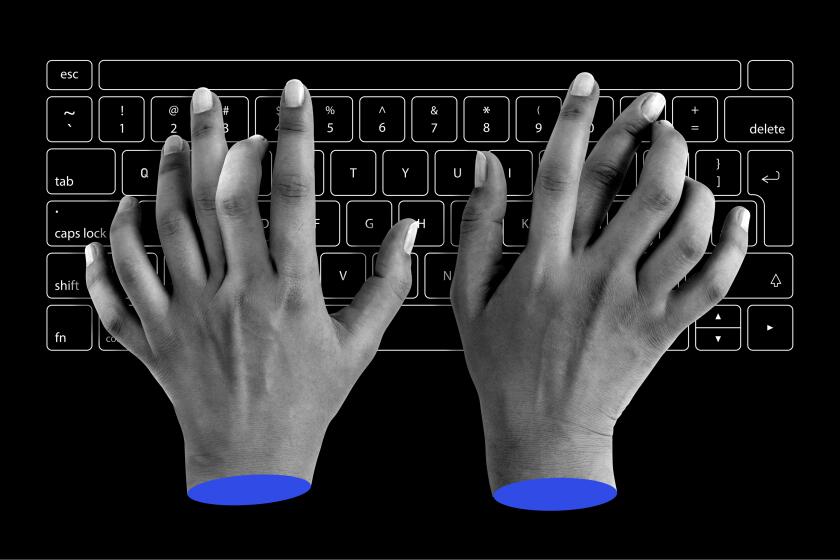Computers Put Viewers in Touch With History
The computer age is placing history at your fingertips. Visitors at the Huntington Library in San Marino are discovering how the U.S. Constitution affects their daily lives in a new exhibit that was funded by IBM, utilizing space-age technology. By merely touching the screen on one of several terminals, viewers can select a variety of events that would have a bearing on the Constitution between 1787 and 1987. The response is presented with a voice narrative combined with newsreel footage, photographs and text.
The exhibit, “A Promise of Permanency,” enables you to choose any of 85 topics involving interpretations of the Constitution by the Supreme Court. It would require about 3 1/2 hours to view the entire program.
Select a subject that is of particular interest--like this:
The year is 1919. Soldiers returning from France following World War I discover that the nation has gone dry. Congress has ratified the 18th Amendment, which outlawed the distilling, selling and transporting of intoxicating liquor. It was undoubtedly the most unpopular mandate in American history.
The government was unable to enforce the law, criminal empires reaped millions of dollars by supplying a thirsty public, and the bootlegger became as familiar a figure on one’s doorstep as the ice man.
In 1933, Prohibition was abandoned and the 21st Amendment repealed the 18th.
Here is a more contemporary topic. Touch the screen.
In 1981, Sandra Day O’Connor joined the Supreme Court led by Chief Justice Warren Burger. The first woman to serve as an associate justice in the high court’s history, she was nominated by President Reagan, who appears on the terminal, saying “. . . that one of my first appointments to the Supreme Court vacancy would be the most qualified woman I could possibly find.” Her nomination was unanimously approved by the Senate. The camera cuts to Justice O’Connor who responds:
“I will do my best to serve the court and this nation in a manner that will bring credit to the President, to my family, and to all the people of this great nation.”
Commenting on the IBM exhibit, Robert Middlekauff, the Huntington’s director said:
“We are living at a time of revolution in technology and communications not unlike the one caused by the development of Gutenberg’s printing press in the 15th Century. In this exhibition, the IBM equipment shows us the potential that technology has for adding a new dimension to the way we teach and learn. And the exhibition demonstrates the importance of the United States Constitution in a factual and imaginative way.”
There are other documents in the main library exhibition hall that will be displayed through the end of this bicentennial year illustrating the creation of the Constitution and the Bill of Rights. Included among the rare books and original manuscripts are a 600 year old copy of England’s landmark Magna Carta; important autograph letters of George Washington, James Madison and Thomas Jefferson. A display case contains three very rare early versions of the Constitution printed in secret for use of the framers as the Constitution evolved through the debates during the Philadelphia summer of 1787.
The IBM exhibit may be seen through Jan. 31. It is sponsored jointly by IBM, the Huntington Library, Art Collections and Botanical Gardens and the California Bicentennial Foundation for the U.S. Constitution.
The Huntington is at 1151 Oxford Road in San Marino. Hours are Tuesday through Sunday from 1 to 4:30 p.m. Admission is free, but a $2 donation per adult is suggested. Advance reservations are required on Sundays. Information and Sunday reservations: (818) 404-2141 Tuesday through Sunday between 12:30 and 4:30 p.m.



